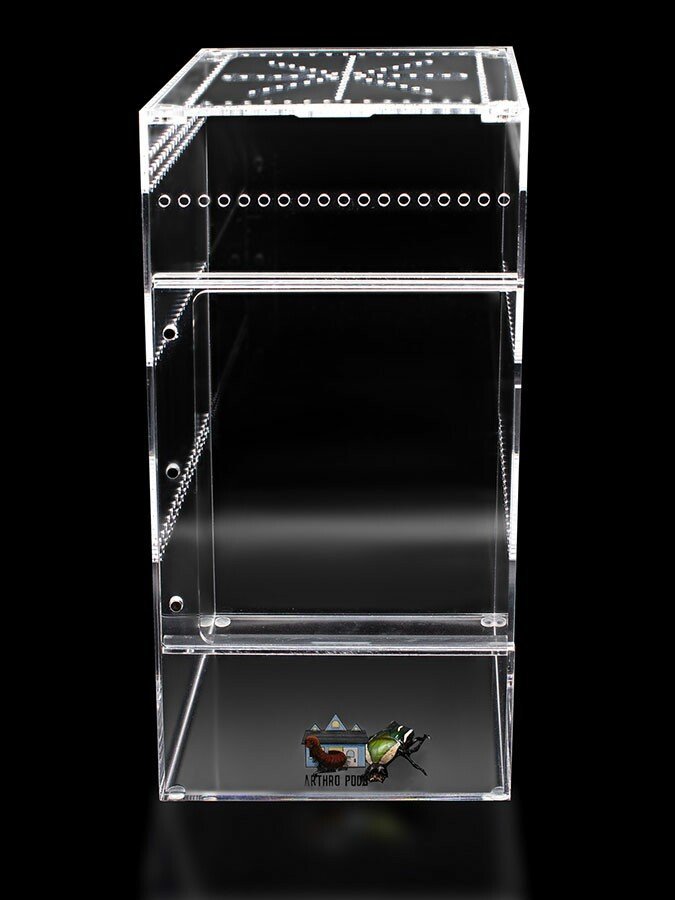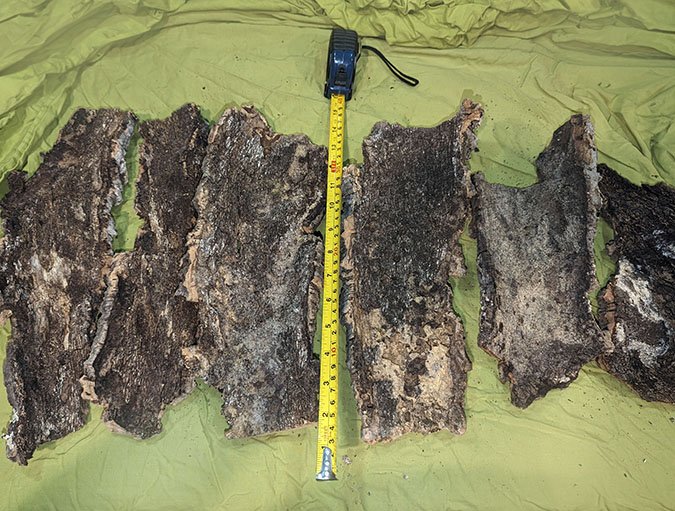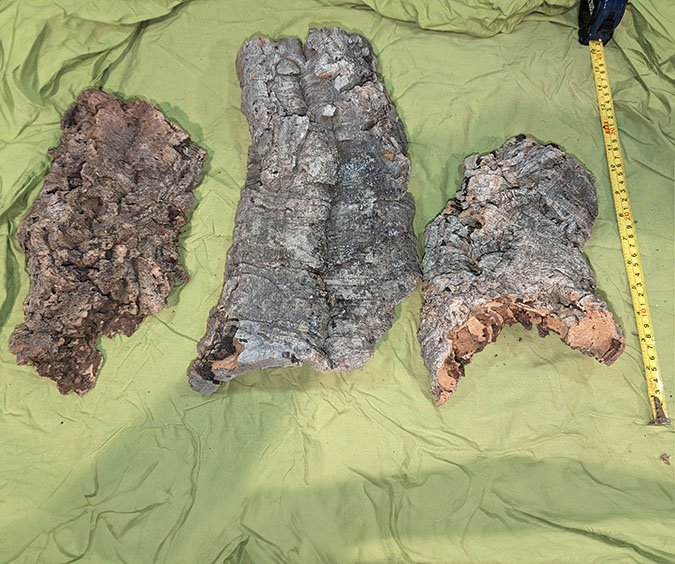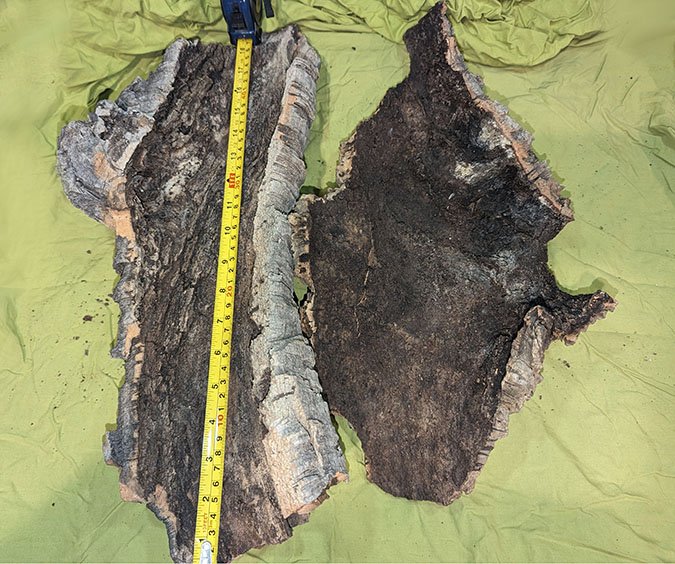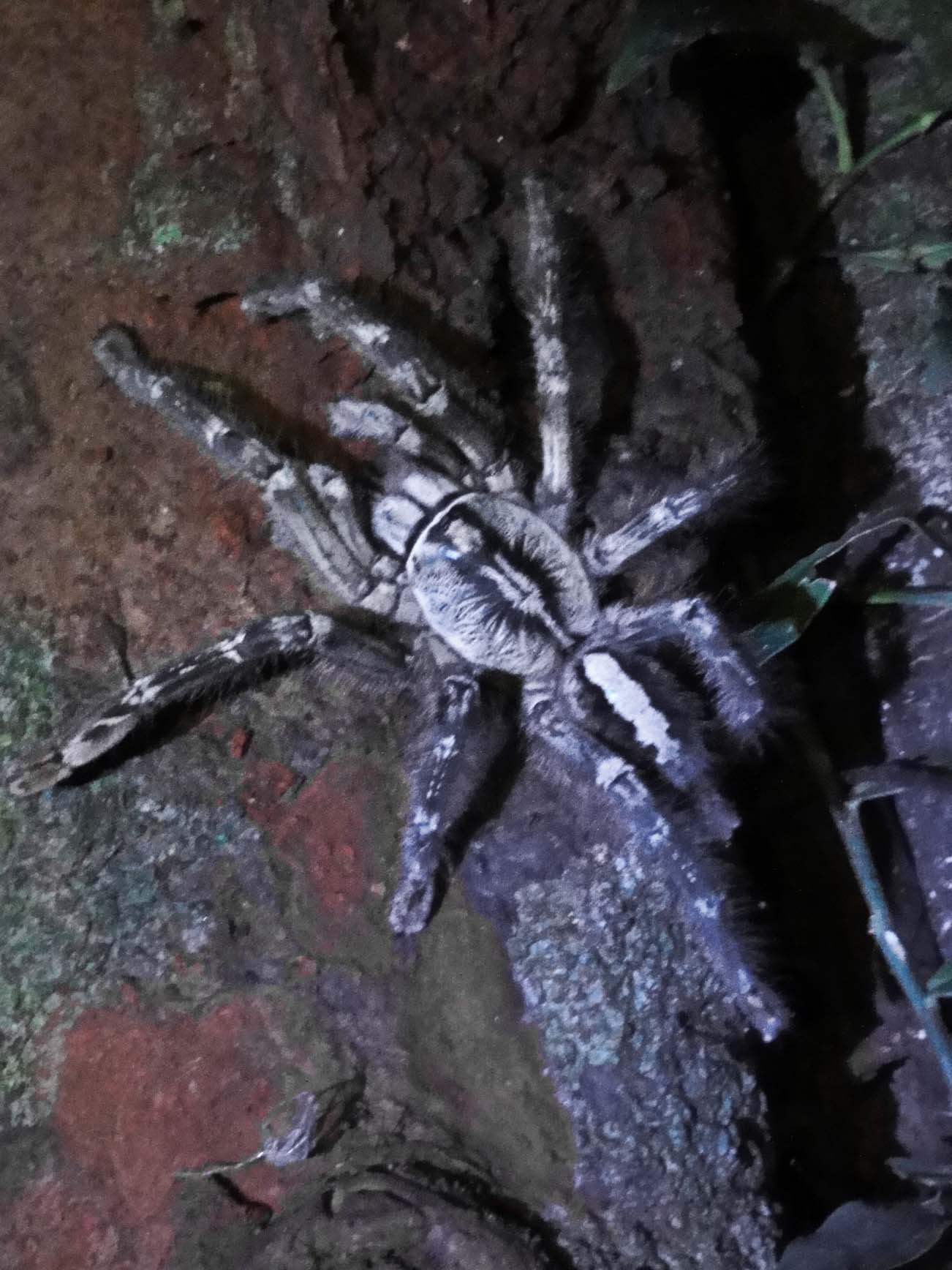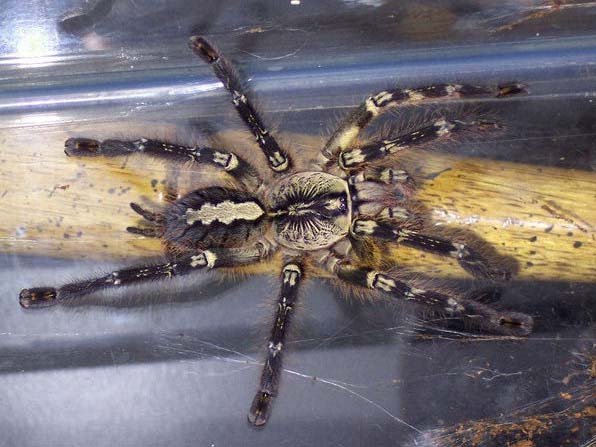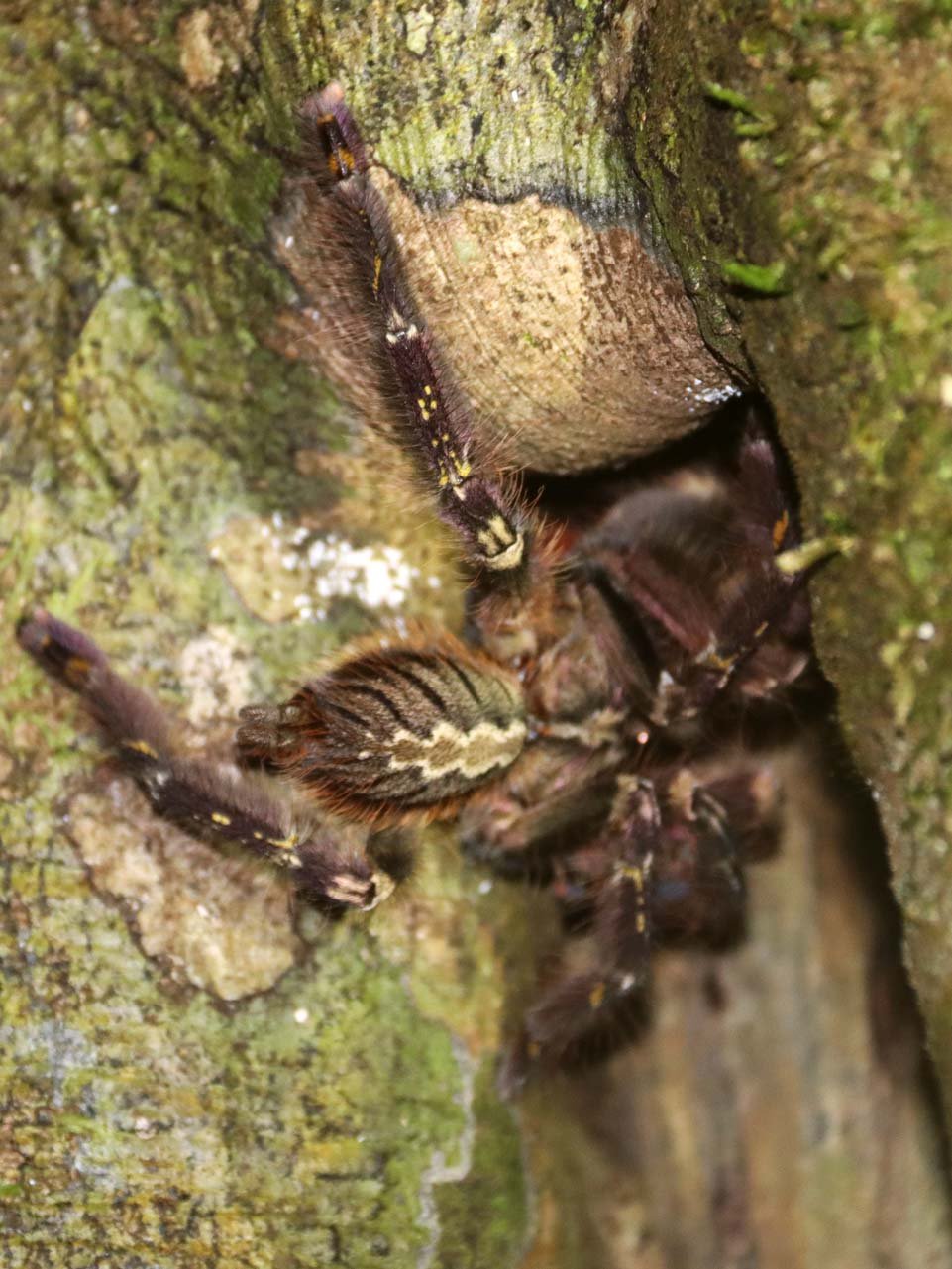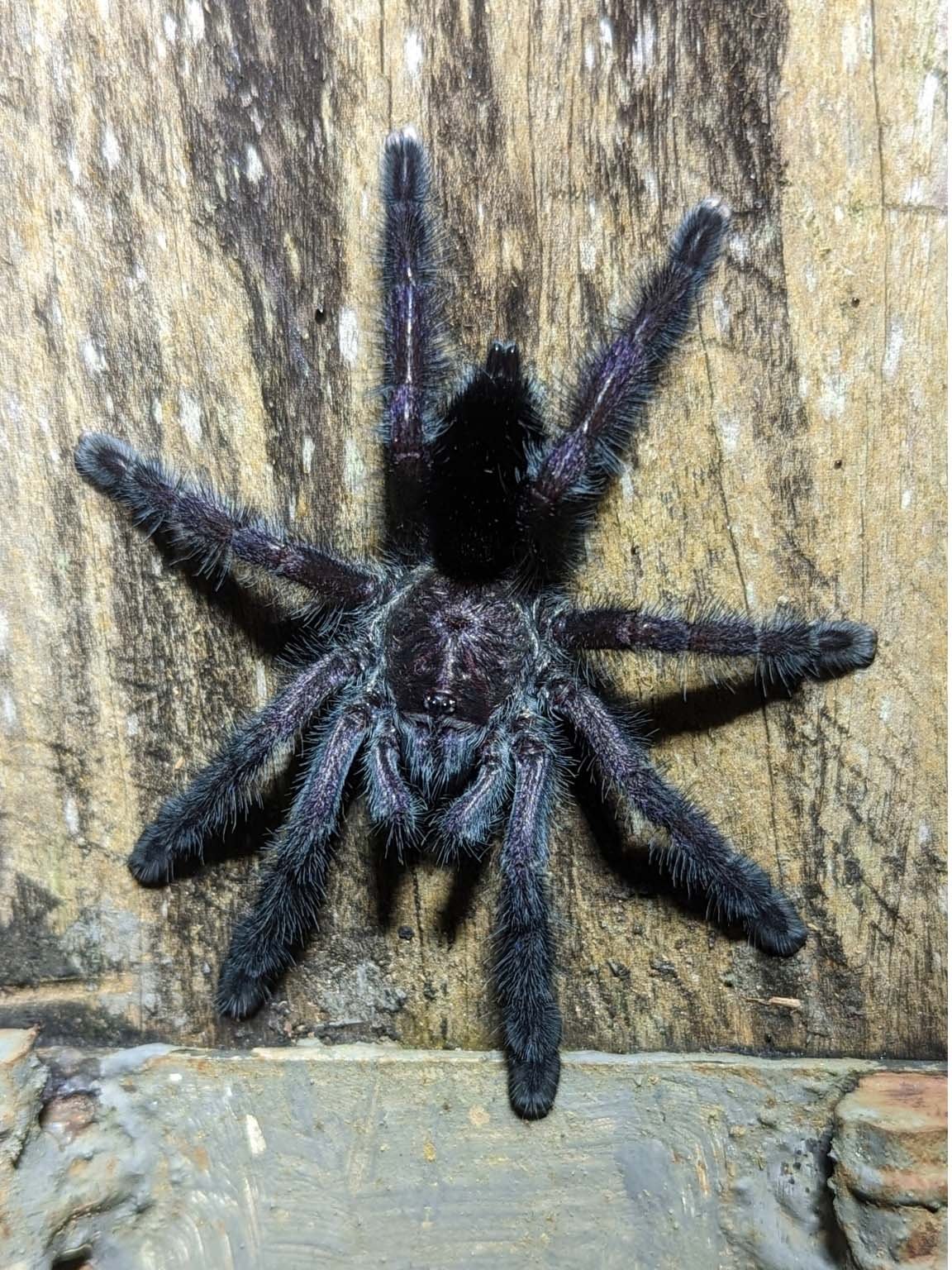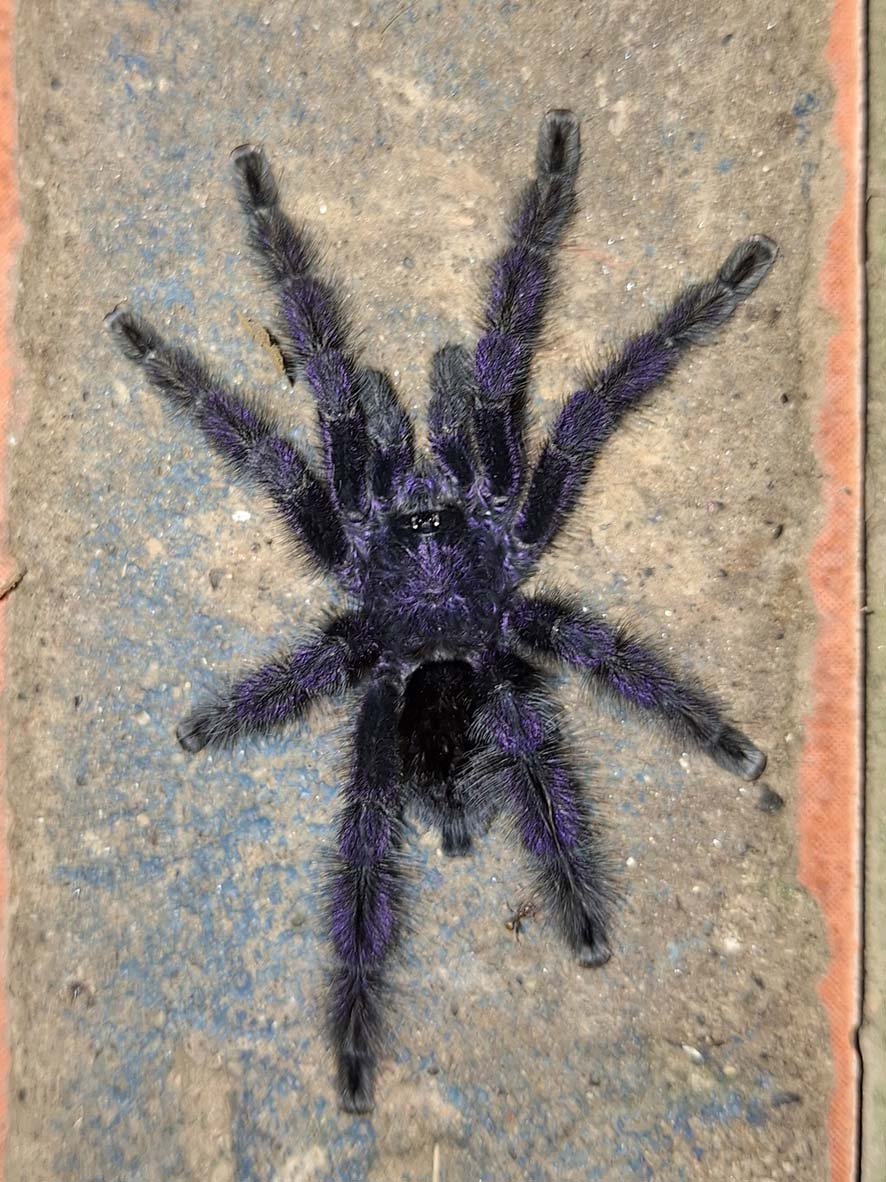Omothymus sp 'Langkawi'
Omothymus sp. 'Langkawi', or "Langkawi Earth Tiger", is a striking arboreal tarantula species native to Langkawi Island, Malaysia. A member of the Omothymus genus—closely related to Phormingochilus—this species is known for its metallic sheen, fast movement, and deep, earthy coloration, often with golden, olive, or bronze undertones depending on lighting and maturity.
This fast-growing Old World tarantula exhibits the typical traits of the Selenocosmiinae subfamily: speed, reclusiveness, and potent venom. While not aggressive, it can be highly defensive and extremely quick, making it unsuitable for beginners but an exciting challenge for advanced keepers.
The Langkawi Earth Tiger is also a heavy webber, constructing thick silk curtains and tubular retreats high in the enclosure, especially if provided with vertical cork bark and foliage.
Omothymus sp. 'Langkawi', or "Langkawi Earth Tiger", is a striking arboreal tarantula species native to Langkawi Island, Malaysia. A member of the Omothymus genus—closely related to Phormingochilus—this species is known for its metallic sheen, fast movement, and deep, earthy coloration, often with golden, olive, or bronze undertones depending on lighting and maturity.
This fast-growing Old World tarantula exhibits the typical traits of the Selenocosmiinae subfamily: speed, reclusiveness, and potent venom. While not aggressive, it can be highly defensive and extremely quick, making it unsuitable for beginners but an exciting challenge for advanced keepers.
The Langkawi Earth Tiger is also a heavy webber, constructing thick silk curtains and tubular retreats high in the enclosure, especially if provided with vertical cork bark and foliage.


Omothymus sp. 'Langkawi', or "Langkawi Earth Tiger", is a striking arboreal tarantula species native to Langkawi Island, Malaysia. A member of the Omothymus genus—closely related to Phormingochilus—this species is known for its metallic sheen, fast movement, and deep, earthy coloration, often with golden, olive, or bronze undertones depending on lighting and maturity.
This fast-growing Old World tarantula exhibits the typical traits of the Selenocosmiinae subfamily: speed, reclusiveness, and potent venom. While not aggressive, it can be highly defensive and extremely quick, making it unsuitable for beginners but an exciting challenge for advanced keepers.
The Langkawi Earth Tiger is also a heavy webber, constructing thick silk curtains and tubular retreats high in the enclosure, especially if provided with vertical cork bark and foliage.
What's the ideal diet for a Langkawi Earth Tiger Tarantula?
All Tarantulas can eat a variety of feeders. Stick to crickets, dubia roaches, silkworms, horned worms occasionally, and a superworm or mealworm as the occasional treat!
How should I keep a Langkawi Earth Tiger Tarantula?
For this particular creature, you can start with the small Arboreal Bliss enclosure, and when they get to be about ⅓ the size, you will want to upgrade to the medium or large Arboreal Bliss enclosure. Feed them as slings once a week, twice if their opisthosoma (abdomen) looks small, but if the opisthosoma is wider than their prosoma (pneumothorax), then wait a couple of days to feed. For juveniles or adults, stick to feeding once a week, nothing larger than their opisthosoma. Make sure to keep a full water dish at all times; wider and deeper is preferred.
How long could a Langkawi Earth Tiger Tarantula live?
Females are believed to live upwards of 15+ years, and males not exceeding around 4+ years of age. All estimates are based on multiple sources.




